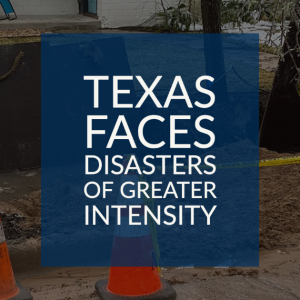The Stream, February 23, 2021: More Than 1,000 Evacuate Indonesia’s Capital After Monsoon Floods
YOUR GLOBAL RUNDOWN
- Monsoon floods force mass evacuations in Indonesia’s capital Jakarta.
- Despite heavy snowfall in Utah, water scarcity could continue this summer.
- A recent study finds a significant portion of Mumbai’s coastline is at high risk of flooding.
- The United States will resume some aid to Ethiopia that was cut off last fall.
Experts and environmentalists issue several warnings after a recent Colorado River study.
“We are going to have to take a much harder look at how water is used in the basin.” – Kathryn Sorensen, research director of Arizona State University’s Kyl Center for Water Policy and a former Phoenix water utility director. Experts and environmental advocates say Arizona and the Southwest can expect more competition between farms and cities for Colorado River supplies and more urgency to cut water use before river basin states approve reservoir operating guidelines in 2025. The Arizona Daily Star reports that the warnings follow a recent study that painted a bleak future for the Colorado River due to climate change. Additionally, experts say that Arizona residents should expect less water from one of the state’s biggest water agencies, the Central Arizona Project, but that the supply won’t entirely dry up.
IN RECENT WATER NEWS
Like Developing Nations, Texas Confronts Lingering Water Crisis
Even as snow melted and the lights flashed back on in Texas late last week, the harshest and most lingering lessons emerged, all of them expressed through the essential element that Americans take for granted: clean water. It wasn’t a matter of scarcity. Rather, like so many billions of people around the world, what Texans encountered after the lights turned on was unsparing difficulty in gaining access to clean water. Though it occurred in some of the world’s wealthiest cities and most exclusive suburbs, the image of Texans scavenging for water was hardly different in its basic form and drama than what occurs daily in rural India and Kenya.
Just as scientific models predicted, ruinous meteorological events in Texas – rain, wind, droughts, floods – now occur with much greater intensity. The question Texans face is whether to continue electing lawmakers who ignore the consequences of climate disruption, which many state leaders consider a scientific hoax.
In Case You Missed It:
HotSpots H2O: Minnesota Rolls Out Plan for PFAS Contamination – Minnesota officials announced a multi-step strategy to address PFAS contamination in the environment.
What’s Up With Water – February 22, 2021 – This week’s episode of What’s Up With Water looks at claims that Chinese dams are limiting outflows in the Mekong River, the 69 dams that were torn down last year in the United States and Nestle, which sold several North American water brands for $4.3 billion.
Despite Heavy Snowfall, Water Scarcity Could Persist in Utah
Low moisture levels in soil could prevent melting snow from reaching reservoirs despite recent snowfall in Utah, the Salt Lake Tribune reports. In the Natural Resources Conservation Service’s most recent water supply outlook, snow-water equivalent (SWE) in Utah snowpack was just two-thirds of normal as of February 1. To achieve normal conditions, SWE needs to improve by 9.4 inches, the report said. The conditions, paired with warming temperatures, are expected to result in runoff volumes as low as a quarter of what normally flows through Utah’s mountains.
TODAY’S TOP WATER STORIES, TOLD IN NUMBERS
1,380 PEOPLE
Monsoon floods forced an estimated 1,380 residents in the Indonesian capital Jakarta to evacuate, Al Jazeera reports. Indonesia’s meteorology agency forecasted severe weather to last through next week and warned that the heaviest rain of the season may fall in the next few days. According to the acting head of Jakarta’s disaster mitigation agency, no deaths have been reported.
20 PERCENT
A recent study found that nearly 20 percent of the coast of the Mumbai Metropolitan Region is at risk of flooding due to unsustainable development, the Hindustan Times reports. The study found that changes in land use and land cover and the destruction of mangroves, wetlands and water bodies between 1976 and 2015 contributed to coastal erosion and flooding linked to rising seas. Other contributing factors include increasing population and activities such as tourism and fishing. The findings confirm those of a 2019 study, which found that large portions of Mumbai could be underwater by 2050 if carbon emissions are not reduced.
ON THE RADAR
Reuters reports that the United States will resume some aid to Ethiopia that was paused under the Trump administration. In September, the United States cut $100 million in aid to Ethiopia. The U.S. State Department said the Biden administration will assess the role it can play in facilitating solutions between Egypt, Ethiopia and Sudan amid ongoing negotiations over the Grand Ethiopian Renaissance Dam.
In context: HotSpots H2O: Tensions Rise in Horn of Africa as Ethiopia Fills Controversial Dam
Jane is a Communications Associate for Circle of Blue. She writes The Stream and has covered domestic and international water issues for Circle of Blue. She is a recent graduate of Grand Valley State University, where she studied Multimedia Journalism and Women, Gender and Sexuality Studies. During her time at Grand Valley, she was the host of the Community Service Learning Center podcast Be the Change. Currently based in Grand Rapids, Michigan, Jane enjoys listening to music, reading and spending time outdoors.






Leave a Reply
Want to join the discussion?Feel free to contribute!